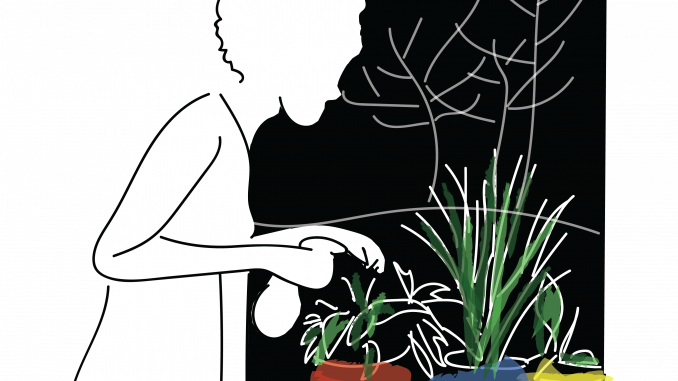
During a recent lecture for my Sustainable Design class, my professor asked, “What’s the tallest building in Philadelphia?”
I imagined our city’s skyline and recognized the glossy, new Comcast Center as the tallest building.
“I’ve heard that every morning at the Comcast building, people have to sweep up dead birds that fly into the glass,” my professor told us.
The birds mistake the glass for blue sky, rather than a fatal reflection. Upon impact, the birds get concussions, causing them to die.
The glass exterior between Paley Library and Tuttleman Learning Center has white decals to help prevent birds from such a fate. But my professor explained that the sleek glass at the Comcast Center lacks these markings.
After hearing about the disheartening fate of so many birds, I began to feel full of dread. Imagine starting your work day with dust pans full of dead or dying birds at the foot of such a remarkable skyscraper. I was heartbroken.
I started to think of more images that feed this sense of fear and ecological doom. These images were easy to envision because they exist all around me — to the point where they feel inescapable.
While cleaning my room one night I found a podcast called Terrestrial, which gave a name to this blend of feelings I’ve been experiencing: “eco-anxiety.”
The host of Terrestrial, Ashley Ahearn, said survivors of environmental disasters typically have the worst cases of eco-anxiety. For instance, suicide rates climbed in the wake of Hurricane Katrina, and many survivors developed post-traumatic stress disorder, anxiety and depression.
Filmmaker Chris Jordan, who was featured on Terrestrial, documented the impact plastic pollution had on the Albatross population, a seabird that lives and feeds in the North and South Pacific.

SASHA LASAKOW / THE TEMPLE NEWS
“I would open up a [dead] bird and take out a handful of bottle caps, and I would just dissolve into tears of grief,” Jordan said on the podcast.
It’s a traumatic experience to be on the frontlines of environmental catastrophes, but as I learned from the podcast, you don’t have to be directly affected to fall victim to this sense of dread.
Ahearn said that even photos of suffering animals and ecological disasters are enough to trigger a fight-or-flight response in the brain. But this response isn’t useful when there is no quick solution to such complicated threats — hence the tension, fear and anxiety.
On TV and social media, I see images of Texas, Florida, Puerto Rico and other Caribbean islands, where picturesque locations have been decimated by major hurricanes that made landfall week after week in recent months, as if Mother Nature is waging an impossible war against us.
Many of our lifestyle choices are influenced by efficiency and convenience, but they can also increase greenhouse gas emissions that contribute to global warming and disastrous weather.
Even when I put down my phone and turn off the news to go outside, I am still reminded of the harmful ways we have altered the world.
The pops of gold, orange and red that I look forward to each autumn have been lackluster this year. Numerous days of unusually high temperatures have caused many leaves to shrivel up and die prematurely — going straight from green to dreary, dry and brown.
As these strange weather patterns and environmental disasters become the new norm, I am overwhelmed with guilt about the ways I’ve contributed to climate change.
I feel bad for the other people, plants and animals who suffer as a result of human greed. I also feel incredibly frustrated — how can we expect to live luxuriously without paying the ecological cost?
It’s important to mitigate eco-anxiety by finding effective ways to balance these negative feelings. For me, I feel a little better when I’m taking care of my houseplants, tending to their supple new growth and getting soil on my hands.
I make a conscious effort to turn off and unplug items to conserve energy. I’ve swapped heaps of plastic bottles for a water pitcher with a filter and one reusable bottle. I even pledged to avoid eating meat at least one day a week, and sometimes I surprise myself with three or more consecutive meatless days.
But despite these comforts and small steps, I know I will contend with eco-anxiety for the rest of my life.
And as the world and its various habitats continue to change as a result of human demands, these feelings of dread and grief will likely be felt by more people.
But this isn’t necessarily a bad thing — it just means we care deeply about the environment. And it’s a matter of using this compassion to improve the world around us.
I remember Jordan explaining that “grief is the love we feel for something we’re losing or [something that] is suffering.”
I want to repurpose this pain and use it as a catalyst for action, instead of allowing helplessness and sadness to trap me in a state of grief. Even if I can no longer witness Earth at its best, eco-anxiety propels me to continue doing all that I can to help make it better.



Be the first to comment